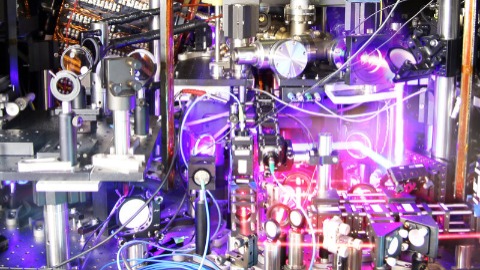
Scientists are inching one step closer toward redefining the length of a second.
To do that, they're using atomic clocks.
Atomic clocks, which look like a jumble of lasers and wires, work by tapping into the natural oscillation of atoms, with each atom "ticking" at a different speed.
Modern conveniences including cellphones, the Internet and GPS are all made possible through the ticking of atomic clocks.
"Every time you want to find your location on the planet, you're asking what time it is from an atomic clock that sits in the satellite that is our GPS system," Colin Kennedy, a physicist at the Boulder Atomic Clock Optical Network (BACON) Collaboration, tells NPR's All Things Considered.
The worldwide standard atomic clocks have for decades been based on cesium atoms — which tick about 9 billion times per second.
But newer atomic clocks based on other elements tick much faster — meaning it's possible to divide a second into tinier and tinier slices.
These newer atomic clocks are 100 times more accurate than the cesium clock. But it was important to compare them to each other — to "make sure that a clock built here in Boulder is the same as a clock built in Paris, as in London, as in Tokyo," he says.